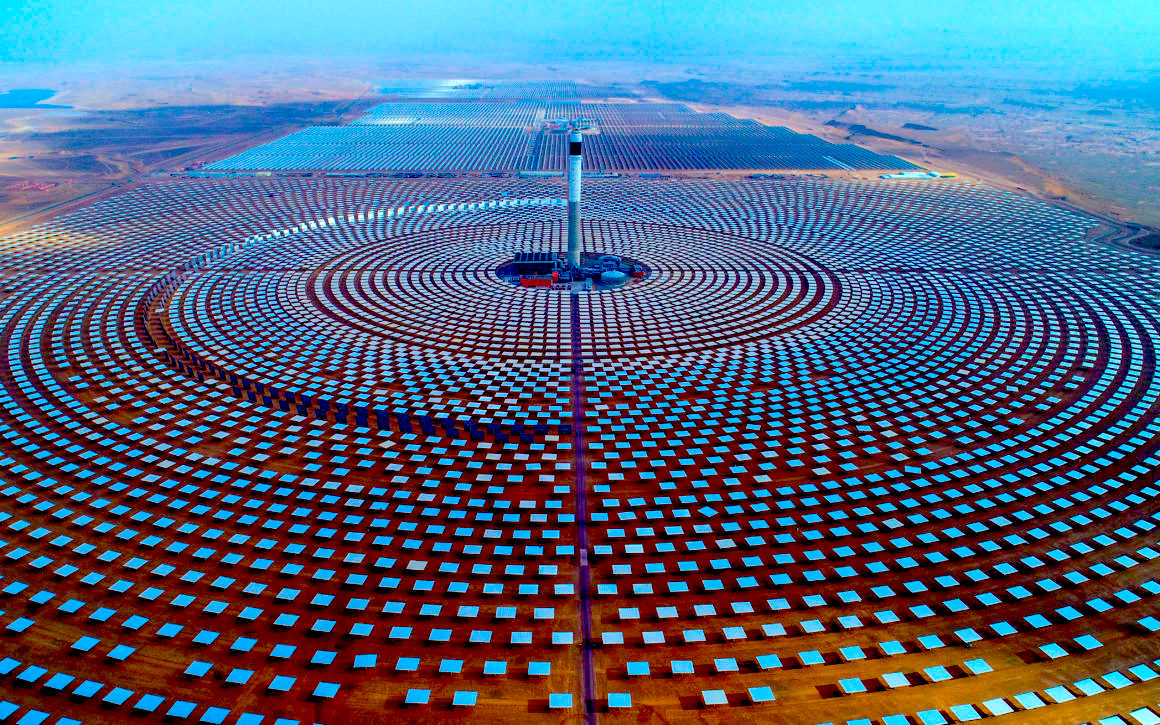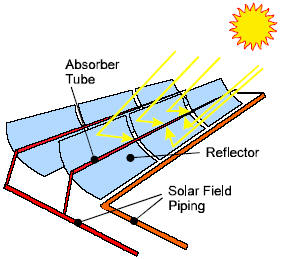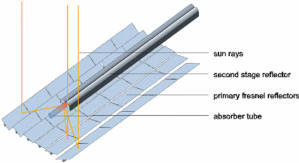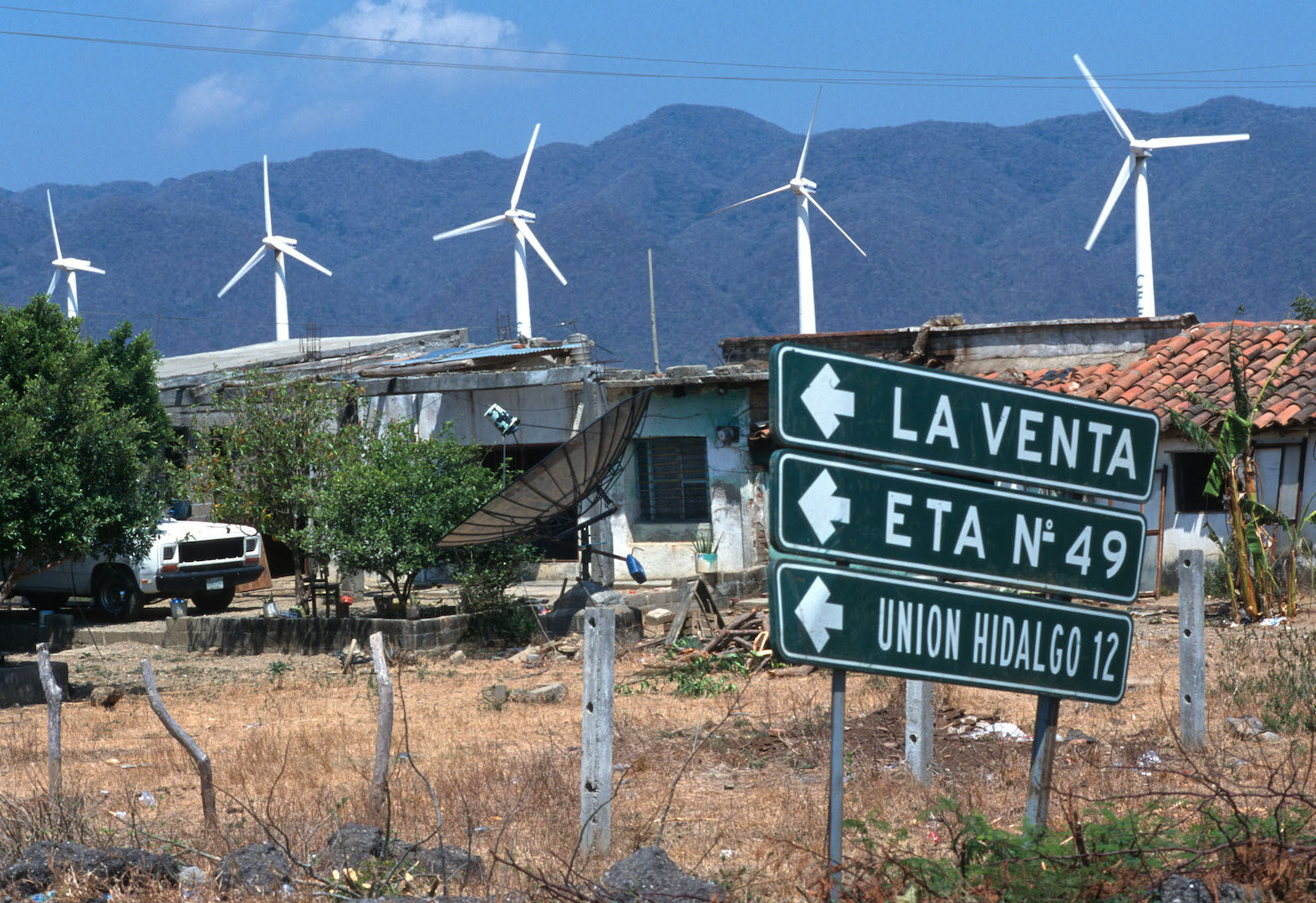
Concentrating Solar Power (CSP) Technologies and Sustainable Development Goals (SDGs)

Tower CSP In the foreground and Trough CSP behind it in this photo of the NOOR I, II, II CSP project at Ouarzazate, Morocco, completed in 2018. This project has about half the capacity of a typical 1 GW nuclear power plant.
Introduction
All concentrating solar power (CSP) technologies use a mirror configuration to concentrate the sun’s light energy onto a receiver and convert it into heat. The heat can then be used to create steam to drive a turbine to produce electrical power or used as industrial process heat.
Concentrating solar power plants built since 2018 integrate thermal energy storage systems to generate electricity during cloudy periods or hours after sunset or before sunrise. This ability to store solar energy makes concentrating solar power a flexible and dispatchable source of renewable electricity, like other thermal power plants, but without fossil fuel, as CSP uses the heat of highly concentrated sunlight.
CSP systems can also be hybridized with combined cycle power plants, resulting in hybrid power plants that provide high-value, dispatchable power. They can also be integrated into existing thermal-fired power plants that use a power block like CSP, such as geothermal, natural gas, or biofuel plants. CSP plants can also use fossil fuel to supplement the solar output during periods of low solar radiation. In that case, a natural gas-fired heat or a gas steam boiler/reheater is used.
Types of CSP Technologies
-
Parabolic Trough Systems:

In a parabolic trough CSP system, the sun’s energy is concentrated by parabolically curved, trough-shaped reflectors onto a receiver pipe running along about a meter above the curved surface of the mirrors. The temperature of the heat transfer fluid flowing through the tube, usually thermal oil, is increased from 293ºC to 393ºC, and the heat energy is then used to generate electricity in a conventional steam generator.A collector field comprises multiple parabolic trough-shaped mirrors in parallel rows aligned to enable single-axis trough-shaped mirrors to track the sun from east to west during the day to ensure that the sun is continuously focused on the receiver pipes. As of 2018, 90% of the CSP in commercial operation is trough. Trough deployment database.
-
Power Tower Systems:

Power tower or central receiver systems utilize sun-tracking mirrors called heliostats to focus sunlight onto a receiver at the top of a tower. A heat transfer fluid heated in the receiver up to around 600ºC is used to generate steam, which, in turn, is used in a conventional turbine generator to produce electricity.
See the SolarPACES-NREL database of global CSP Tower deployment -
Linear Fresnel Systems:

Similar to the long arrays of a parabolic trough CSP system, a Linear concentrating collector field consists of many collectors in parallel rows. These are typically aligned in a north-south orientation to maximize annual and summer energy collection. The mirrors are laid flat on the ground and reflect the sunlight to the pipe above. Like trough and tower CSP, Fresnel CSP can also incorporate storage in a power block or generate steam for direct use.SDGs, Targets, and Indicators in the Article
1. SDGs Addressed or Connected to the Issues Highlighted in the Article
- SDG 7: Affordable and Clean Energy
- SDG 9: Industry, Innovation, and Infrastructure
- SDG 13: Climate Action
2. Specific Targets Under Those SDGs Based on the Article’s Content
- SDG 7.2: Increase substantially the share of renewable energy in the global energy mix.
- SDG 9.1: Develop quality, reliable, sustainable, and resilient infrastructure.
- SDG 13.2: Integrate climate change measures into national policies, strategies, and planning.
3. Indicators Mentioned or Implied in the Article to Measure Progress towards the Identified Targets
- Percentage of renewable energy in the global energy mix.
- Investment in renewable energy infrastructure.
- Number of countries with policies and strategies integrating climate change measures.
Table: SDGs, Targets, and Indicators
SDGs Targets Indicators SDG 7: Affordable and Clean Energy Increase substantially the share of renewable energy in the global energy mix. Percentage of renewable energy in the global energy mix. SDG 9: Industry, Innovation, and Infrastructure Develop quality, reliable, sustainable, and resilient infrastructure. Investment in renewable energy infrastructure. SDG 13: Climate Action Integrate climate change measures into national policies, strategies, and planning. Number of countries with policies and strategies integrating climate change measures. The article discusses concentrating solar power (CSP) technologies, which are relevant to SDG 7 as they contribute to affordable and clean energy. CSP plants use mirrors to concentrate sunlight and convert it into heat, which can be used to generate electricity. This aligns with SDG 7’s target of increasing the share of renewable energy in the global energy mix.
The article also mentions the integration of CSP with existing thermal-fired power plants and the use of fossil fuels as a supplement during periods of low solar radiation. This highlights the importance of developing quality, reliable, sustainable, and resilient infrastructure, which is a target under SDG 9.
Furthermore, the article emphasizes the role of CSP in climate action by integrating climate change measures into national policies, strategies, and planning. This aligns with SDG 13’s target of integrating climate change measures into various aspects of governance.
The indicators mentioned or implied in the article include the percentage of renewable energy in the global energy mix, which can measure progress towards SDG 7.2. Additionally, investment in renewable energy infrastructure can be used as an indicator to track progress towards SDG 9.1. Lastly, the number of countries with policies and strategies integrating climate change measures can serve as an indicator for SDG 13.2.
Behold! This splendid article springs forth from the wellspring of knowledge, shaped by a wondrous proprietary AI technology that delved into a vast ocean of data, illuminating the path towards the Sustainable Development Goals. Remember that all rights are reserved by SDG Investors LLC, empowering us to champion progress together.
Source: solarpaces.org

Join us, as fellow seekers of change, on a transformative journey at https://sdgtalks.ai/welcome, where you can become a member and actively contribute to shaping a brighter future.






